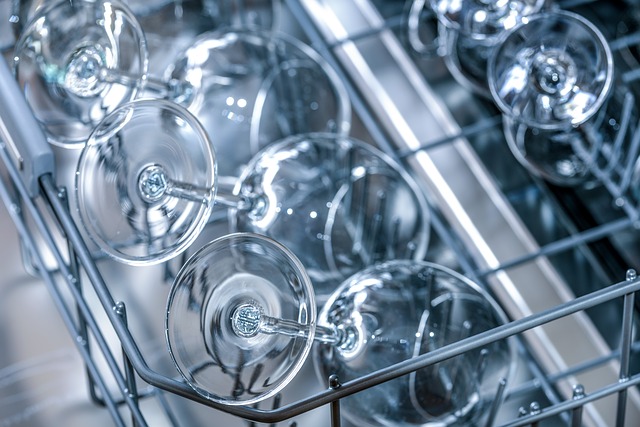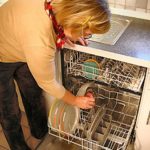is there always a puddle of water on the floor after or during the wash and rinse cycle? if it is just call us at (844) 254-4600 is your dishes that you pot on the dishwasher frequently coming out stained or spotted?if it is just call us at (844) 254-4600 If Your Dish Washer refuse to start washing refuse to start washing just call us now (844) 254-4600

Are the you put in the dishwasher frequently coming out stained or spotted? Is there always a puddle of water on the floor after or during the wash and rinse cycle? Does the dishwasher simply refuse to start washing at all? If you answered yes to any of these questions, don’t feel badly about yourself and don’t panic because you believe you will have to spend exorbitant fees to have the dishwasher ripped out and a new one installed
The three questions above account for a very large amount of all problems reported with dishwashers. But the good news is that you can resolve these problems more than 90 percent of the time all by yourself without needing to call a professional to do the work for you. Think of that! Instead of shelling out money, you can fix the problem yourself, typically in under thirty minutes. Many of the repairs that you can do on you own
are simply routine maintenance procedures and don’t require special skills or tools and are very inexpensive to fix.
This article will help you in finding the root causes of many of your problems and will then provide you with the maintenance steps you need in order to solve the problem. Even if you are a complete novice when it comes to appliances, you could get your dishwasher back online in less than 30 minutes
Most washing machines follow a basic design, so don’t worry about if your particular model or brand will not be put together the same way that the instructions in this article tell you. If you have trouble figuring out how everything is put together in the machine, you can always use your owner’s manual to help you find out what part goes where
Dishwashers don’t work the same way that clothes washers do. Instead, between two and three gallons of water is flooded into the bottom portion of the tub, where it is mixed up with the detergent. Then, the watery mix is pumped through the oscillating arms and jetted onto the dishes. When the wash cycle is over, the grey water is drained and fresh water is pumped in to rinse the dishes. The cycle is repeated several times to ensure that the dishes are clean and sanitary
One of the most common and universal complaints is that the dis
hes are not coming out clean. Check your machine against the following list to see if anything is out of place
- Is the dishwasher overloaded? If you have access to your owner’s manual, reference it to see if you are packing too much into your dish washer.
- If you have hard water, do you use a specialized rinsing agent? Hard, highly mineralized water is known to leave a nasty film on dishes.
- Do you use dishwasher detergent that has been approved for your particular machine?
- Are you careful to scrape any food pieces off of your dishes before loading them?
- Does the silverware frequently drop below the lower basket during the cleaning cycle? The spray arm can’t spin if utensils are blocking it and as a result your dishes will remain dirty.
One rather complex question is if temperature of the water is high enough to effectively clean your dishes. It is recommended that the temperature of your household water heater be set at no hotter than 120 degrees F. This will both help to ensure that you don’t get burned if you accidentally turn on the hot water instead of the cold and to stay as energy efficient as possible.
Most modern dishwashers have built in elements that will elevate the water temperature to approximately 140 degrees F, but some of the older ones do not and need the temperature of the household water to be set at 140 degrees F
If the dishwasher needs the water to be at 140 degrees F in order to clean the dishes, you can check the temperature of your water by putting a meat thermometer into a cup and filling it up at any of your faucets set at the highest setting. If the temperature of your water is less than 140, you will either need to increase the temperature on your hot water heater or buy a new dishwasher. It’s important to make sure you follow the maintenance steps that are listed below in order to verify that the dirt on the dishes isn’t caused by something else.
Clean off the spray arm.
- Clean off the spray arm. Take the spray arm and twirl it to ver
ify that it spins freely. Check the holes in the arm to see if they are clogged. If there is debris blocking the holes, or the arm does not spin freely, removing the arm and cleaning it should resolve your problem. To take the spray arm off, you will first need to remove the wire baskets. You can usually take these out by removing either a pin or a cap located at the end of the sliding tracks. If there’s a little bit of water on the bottom of the dishwasher, it’s not a big deal. It actually helps to keep the rubber seals in the motor assembly and the pump damp. If they were to dry out they could crack, which would lead to leakage.
The spray arm will come off if you give a clockwise turn, the opposite way most things screw off in the United States. You will find that paper, plastic, rubber bands and twist ties often end up in the spray arm. You may find that using a pair of needle nose pliers to remove the debris will make your job much faster. Typically, the pump in the dishwasher will devour this type of debris without issue, but if a loud, abrasive noise suddenly erupts from the machine while it is washing your dishes, a hard object such as a piece of broken glass could be stuck in the intake. Unscrewing and removing the cover to the pump takes just a second and anything stuck in there can easily be taken out.
Clean the float switch. Clean out the intake valve screen.
- Clean the float switch. Typically, the float switch isn’t the problem, but it really doesn’t take that long to check it, so just open it up and clean it out. If there is a lot of debris in there, it can cause the float to get stuck in the up position, which will keep the tub of the dishwasher from filling with water. Alternatively, it could get stuck in such a way that it keeps the water from reaching the right level – just above the heating element. On the majority of models, you will find that the float switch is located within the lower front of the dishwasher’s tub. Most models have covers to keep dirt and debris out of them, but some of them are exposed. These ones will probably need to be cleaned with an object such as a pipe cleaner or a small and flexible brush. You will know that the float is clean when it is able to slide up and down with ease.
- Clean out the intake valve screen. A very common sign indicating that the intake valve screen is clogged is an insufficient amount of water in the machine during the dishwashing process. If the water level is low in the machine, it could also mean that the float switch is clogged, but hopefully you already checked that. The first thing you’ll want to do is shut the door and run the dishwasher until it is finished filling during the second cycle. Then, you will immediately open the door and inspect the water level. If the water isn’t up to the heating element, it is considered too low. After you let the machine finish cycling through, clean out the screen for the intake valve.
You will be unhooking several electrical wires, so make sure that you cut off the electricity to the dishwasher at the main breaker panel before you start work. You should turn off the water to the machine as well so that you don’t get any unpleasant surprises during your cleaning job. Typically, the shutoff can be found near the hot water supply line underneath the closest sink. The inlet valve will be found located underneath the dishwasher itself, usually near the front.
You will need to take off the lower panels and then take off the valve in order to reach the valve screen, which is a wire device located inside the body of the valve. If you aren’t able to pull the wires off easily, you’ll need to push the indicated location in the middle of the connector in order to release them. If you think you’ll have a hard time remembering which wires connect to which terminals, you can always tag one wire and its corresponding terminal with tape so that you can easily see which goes where.
The next step is to unhook the copper supply tube and put it into a pan. Turn on the water so that you can run out any sediment or debris that has built up before you reconnect the supply tube. After you have put everything back together, you can test run a load of a few dishes. If they are still dirty, you should probably call now 844 254-4600 for Fort Lauderdale, Florida repair services; at this point, you’ve done everything you can on your own. We offer some of the best repair services in Fort Lauderdale, Florida; check us out.






